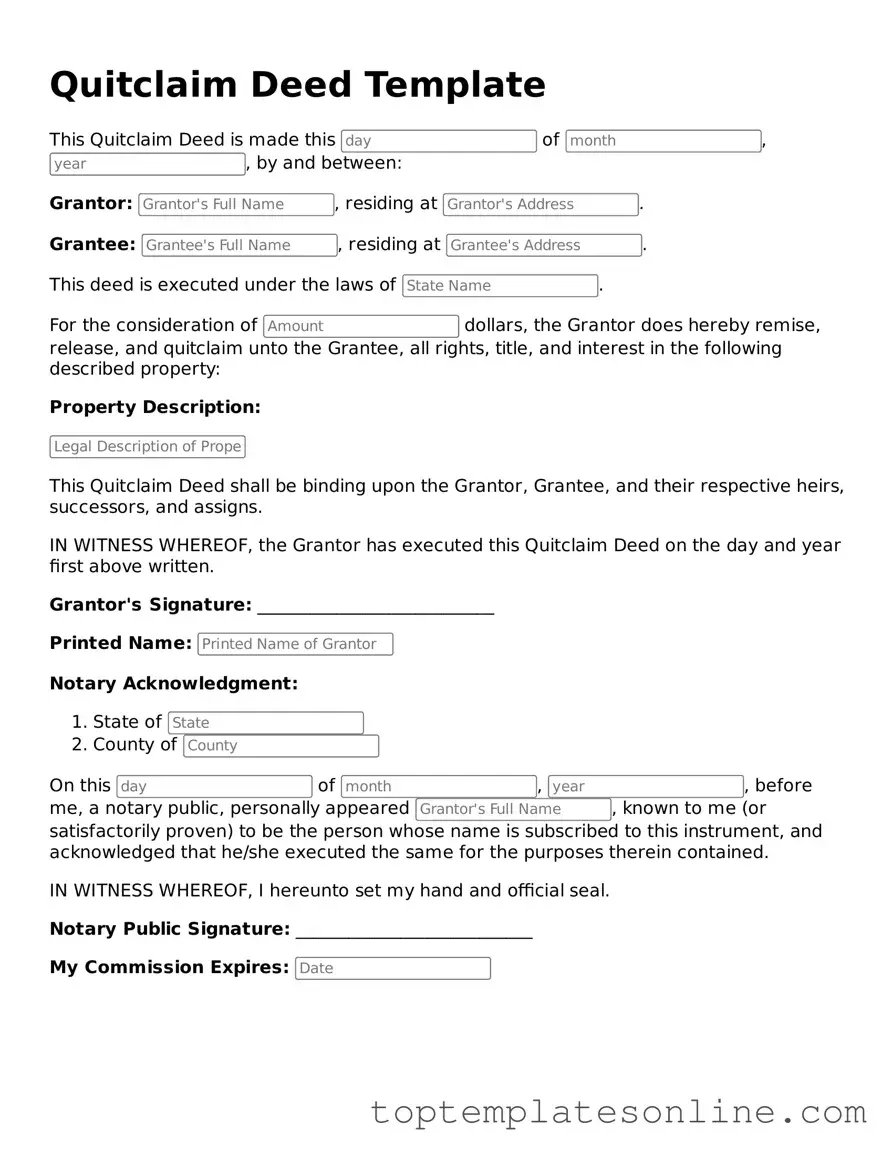The Quitclaim Deed form serves as a vital tool in the realm of property transfers, enabling individuals to relinquish any interest they may have in a property without making guarantees about the title's validity. This type of deed is particularly useful in situations where the parties involved have a level of trust, such as family members or close friends, as it does not require a title search or warranties. The form typically includes essential information such as the names of the grantor (the person giving up their interest) and the grantee (the person receiving the interest), along with a legal description of the property in question. Additionally, it often requires the signature of the grantor and may need to be notarized to ensure its legality. Understanding the Quitclaim Deed is crucial for anyone involved in real estate transactions, as it can simplify the transfer process while also carrying certain risks, especially regarding the clarity of ownership rights. When executed properly, this form can effectively facilitate the transfer of property rights, making it an important document for both individuals and legal professionals alike.
